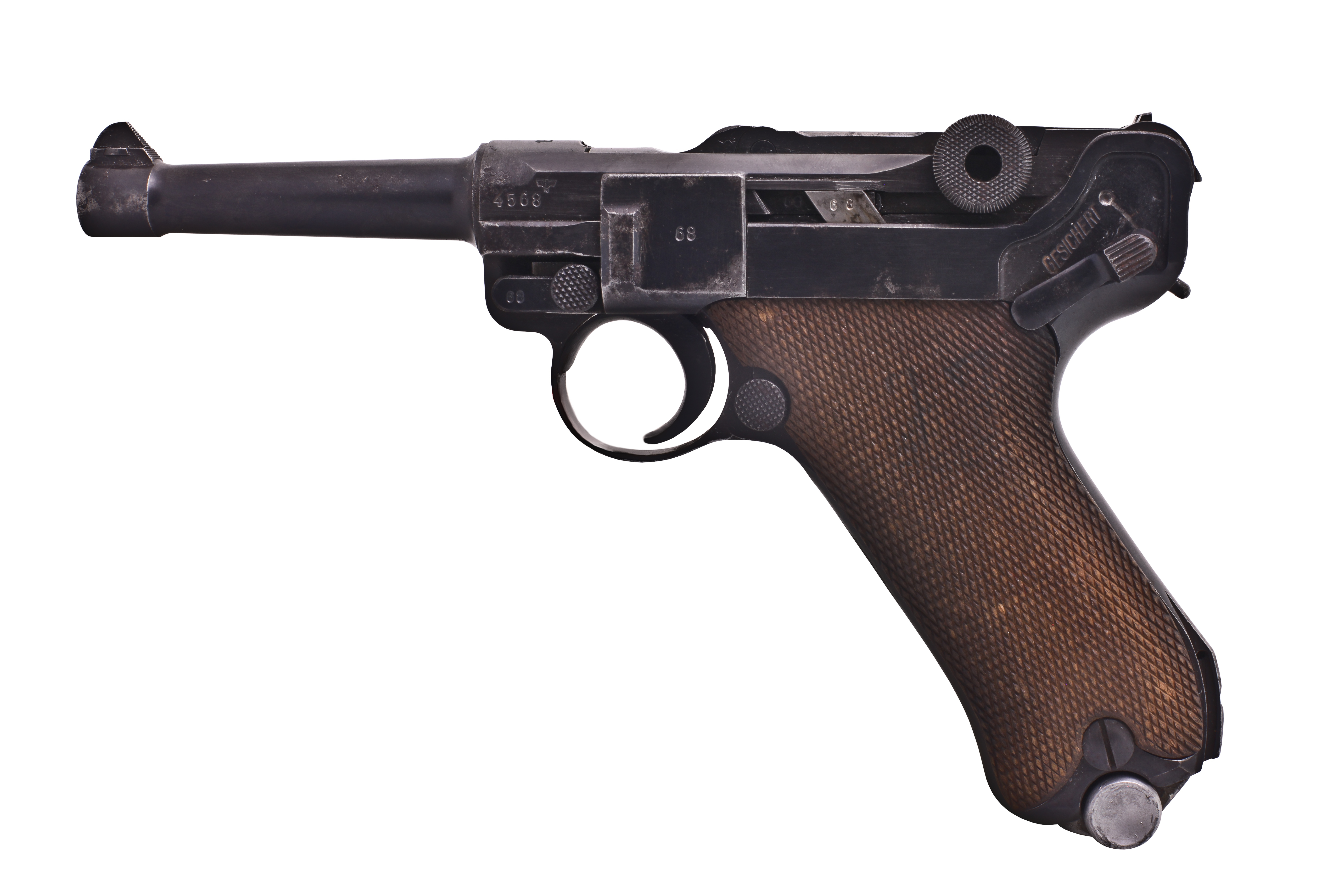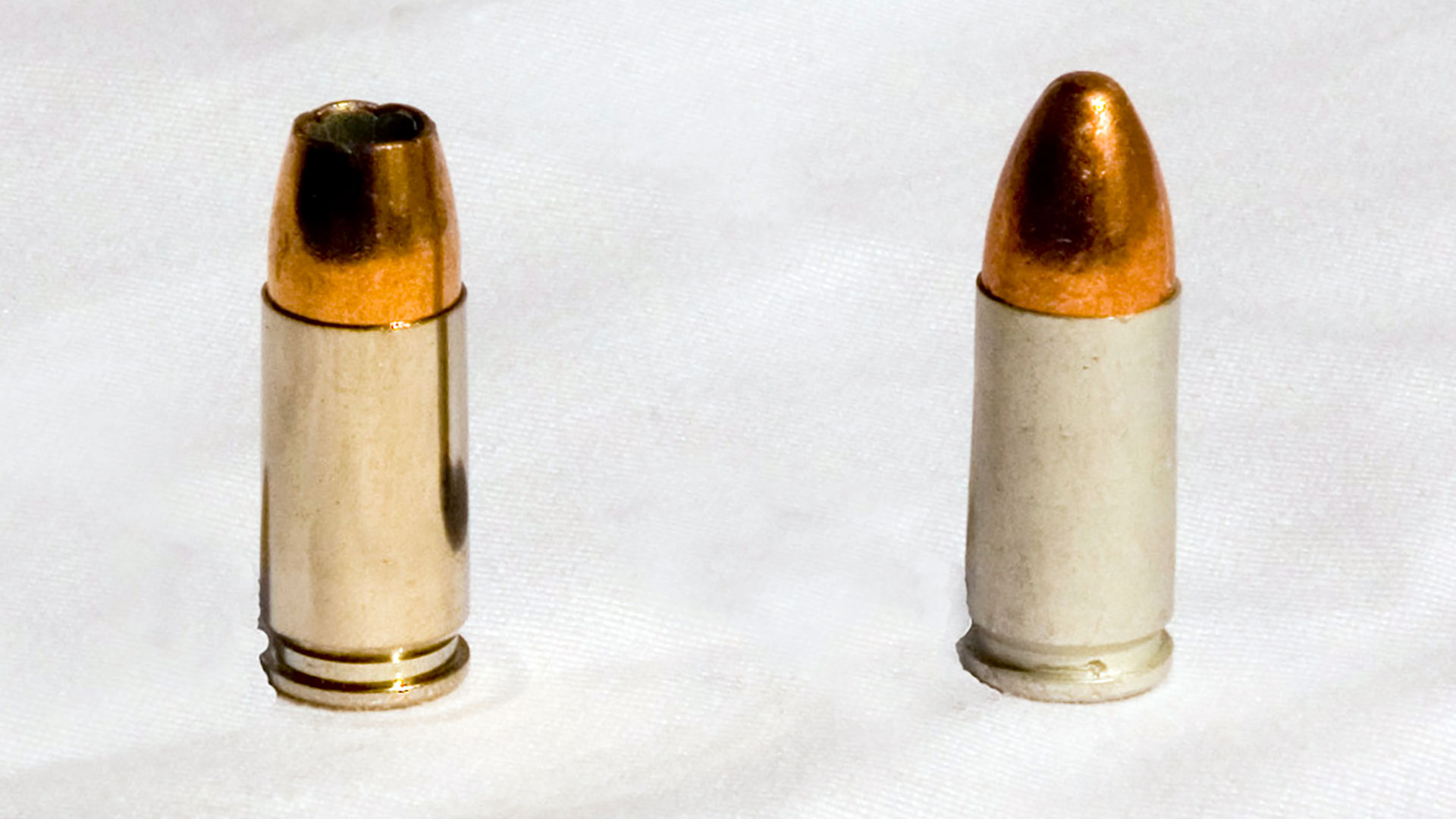Luger 9mm Revolver - It's Wheel Gun Wednesday! Today's review is part of a series of articles focusing on the role of revolvers in modern self-defense.
Throughout the series, I've discussed the techniques, gear, and durability to bring affordable and reliable revolvers into the semi-auto world. But one popular topic that I haven't paid attention to is the light and compact revolver.
Luger 9mm Revolver

This was no accident. Although featherweight snubbies are the most popular type of wheelgun today, they are also responsible for the negative impression many revolver shooters have. They are difficult to control and shoot accurately. In defensive caliber, they offer tough retreat, and almost without exception, have a formidable sight. I prefer to focus on revolvers that have a little more size and weight to them, that are fun to shoot and also easy to shoot.
Ruger® Lcr® Double Action Revolver Model 5456
But if there's one exception to the rule of user-hostility in the lightweight snubnose category, it's the Ruger LCR series. When the original .38 special version came out a few years ago, I wasn't really too impressed at first. The trigger is certainly a big improvement over Smith & Wesson's ubiquitous J-frame, but the hard recoil is no better than other lightweight revolvers. Some people are okay with carrying a gun they don't take much of, but to me, that's a low point of practice. If a gun's recoil is uncomfortable, then I don't want to shoot 50+ rounds at once, so I'll find a different gun to carry, one that I'll like.
Fortunately, Ruger followed up the original LCR with a slightly heavier version chambered in .357 magnum. You have to be a glutton for punishment to shoot a magnum a lot, but the extra four ounces of weight in the .357 LCR makes a big difference when shooting .38 Special ammo, making the recoil "untolerable". " a little upset. The addition of the .22 LR version of the LCR, which I reviewed last year, adds even more appeal as you can have a cheeky trainer with the same size, shape and feel as its siblings.
And that brings us to the subject of today's review: the new LCR 9mm. It is built on the same frame as the .357 version, so the top half is steel with the bottom half polymer. And like the .38 and .357 Special versions, the 9mm cylinder holds 5 shots. In fact, aside from the caliber, the only major difference from the 9mm version is the use of a moon clip.
Ammunition for the 9mm LCR is loaded with moon clips – small pieces of sheet metal attached to the base of the 9mm cartridge.
German Luger Semi Auto Pistol By Dwm, Marked 1917 On Top Of Receiver, 9mm Cal., 4” Barrel, Militar
You might think that a 9mm revolver is the solution to your problem. With scores available in .38 special and .357 magnum, what's the point of chambering a revolver in 9mm, especially since it requires fiddling with a moon clip to make it work?
If revolver simplicity appeals to you, the .38 or .357 LCR version probably makes more sense, but there are some compelling reasons to consider the 9mm version.
The Ruger LCR 357 (left) and LCR 9mm (right) can be distinguished by the relief cut in the 9mm cylinder to accommodate the moon clip.

First, there are the advantages that moon clips offer for recharging. Both spent cartridges and reloading new cartridges are faster with a 9mm moon clip than rimmed revolver cartridges and speed loaders. The shorter length of the 9mm cartridge makes the case jammed and generally speeds up the reloading process.
Best 9mm & .45 Acp Revolvers
But as I've mentioned in the past, the chances of pulling a revolver in a real-world emergency are slim at best. There are, however, some less exciting, but nonetheless practical advantages of the 9mm revolver. The cost of ammunition is huge. Ammo prices are changing, but I can't remember a time when 9mm ammo was more expensive than .38 Special. Sharing common ammunition with semi-automatic pistols is another advantage. Even if you don't envision a doomsday nuclear desert scenario with reduced ammo, it can be a great convenience to minimize the number of calibers you keep in your personal stockpile.
Unlike the speed loader, the moon clip stays with the cartridges and fits into the recess cut into the face of the cylinder. The revolver can be loaded and fired without a moon clip, but then the spent casing must be removed from the chamber by hand.
But most importantly, ammo yield is perhaps the biggest advantage of the 9mm revolver. Neither the .38 special nor the .357 magnum are known to live up to their potential when fired from a short barrel. There are some good self-defense loads designed specifically to deal with this problem, but 9mm loads tend to exhibit better ballistic properties in short-barreled guns. You can find a ballistics test that shows the superior penetration or expansion of the .357 compared to the 9mm, but that will come at the cost of extremely punishing recoil.
None of these advantages mean much if the LCR 9mm isn't as good at the range as other chamberings. I've had a .357 magnum LCR for several years and have spent a fair amount of time with it this year since I started the Wheel Gun Wednesday series. I've been pretty happy with the performance I've gotten from the .357 version, so how does the 9mm LCR measure up?
Ruger Lcr 9mm Revolver
Standard sights for the Ruger LCR 9mm are a U-notch rear and an interchangeable white front ramp.
Despite the less-than-ideal vision, slow-fire accuracy is respected. Using 135-grain 9mm Hornady Critical Duty ammo, I shot 5-round 2.25-inch groups at 15 yards. With Blazer Brass 115 grain, the group opens up to 4″. Nothing to write home about, but accuracy is on par with other small revolvers.
The trigger on the LCR 9mm is as good a revolver trigger as you can find. Pull weight measured 9 pounds on my trigger scale, which is about a pound lighter than my .357 LCR. But more important than the weight, it's also smooth and consistent. Traditionally, a stiff trigger is one of the worst aspects of shooting small revolvers, but Ruger has reversed that trend with the LCR series.

Ruger LCR .357 (left) and LCR 9mm (right) are almost indistinguishable except for holster wear and the XS front sight on this .357.
Ruger Lcr 9mm Revolver Review & Field Test
On the range, the moon clip works as advertised. I have no problem with them attaching to the cylinder, and reloads are definitely easier than using a speed loader. Unfortunately, the overall experience of shooting the LCR 9mm does not live up to what I have come to appreciate from its .357 counterpart.
It's all about physics. Of course, the 9mm ammo has better ballistic performance than the .38 Special and has less recoil than the .357 magnum. But don't expect recoil like a small 9mm semi-auto like the Ruger LC9 or S&W Shield. Without an alternate semi-auto slide to extend and reduce recoil perception, the click of a small 9mm revolver is no picnic.
The Ruger LCR 9mm is about the same size as the semi-automatic Ruger LC9s, which holds three more rounds and offers less recoil.
Doing some practice with the fire timer, my actual performance was no different from the two revolvers. But after shooting an American Eagle 130 grain .38 Special through .357 LCR, I'm ready for more. After three cylinders of Lighter Brass Blazer in LCR 9mm, I have to take my break for a few minutes.
The Best 9mm Pistols
To me, the slight ballistic advantage the 9mm ammo provides is not worth the recoil. Others may find the 9mm LCR more fun to shoot than I did, but I would advise less experienced shooters to avoid it. Even with a smooth trigger, firing this gun is a near-certain way to develop a nasty cocking reflex unless you've been practicing with heavy recoil guns regularly. On the other hand, a .357 LCR loaded with some recoiling full cutter ammo may be just about the best way to meet the challenge of a soft nose. I like the 9mm revolver concept in theory, and have no complaints with Ruger's execution, but the .357 LCR will remain my favorite lightweight compact revolver. It is a semi-automatic pistol with recoil. Luger was produced in various models and in various countries from 1898 to 1949.
This design was pioneered by Georg Luger. It was intended as an improvement on the Borchardt C-93 pistol, and was originally produced as the Parabellum automatic pistol, Borchardt-Luger system by the German weapons manufacturer Deutsche Waff und Munitionsfabrik (DWM).
The Luger was officially adopted by the Swiss Army in 1900, the Imperial German Navy in 1906 and

Reloading dies 9mm luger, luger 9mm clips, hornady 9mm luger die set, hi point 9mm luger holster, luger 9mm review, 9mm luger holster, reloading 9mm luger, blazer 9mm luger, 9mm moon clip revolver, 9mm luger 50 box, ruger 9mm luger holster, 9mm luger die

0 Comments